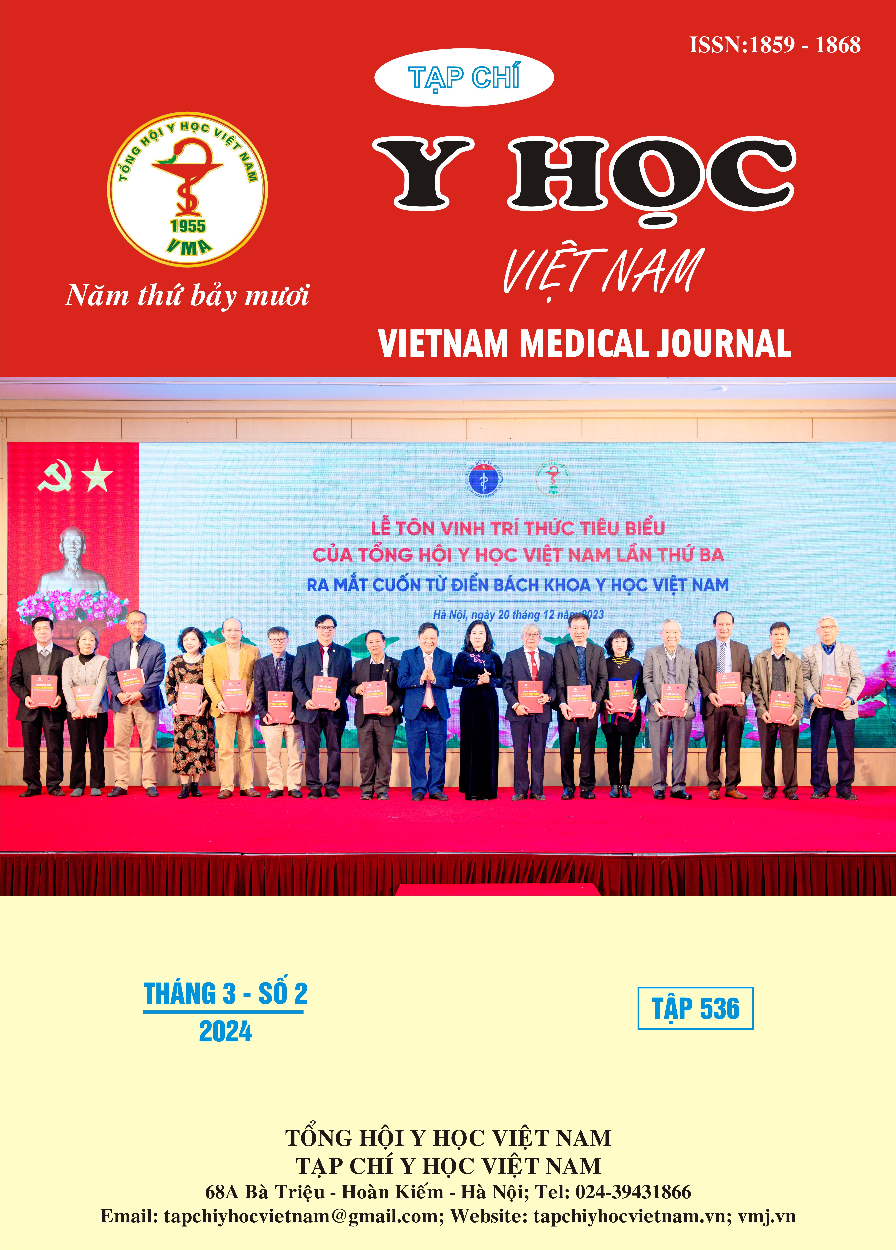EPIDEMIOLOGICAL CHARACTERISTICS OF ACUTE POISONING IN CHILDREN AT CHILDREN'S HOSPITAL 1
Main Article Content
Abstract
Background: Acute poisoning is a common emergency in children. This is also one of the important problems that affects physical and mental development and even causes death in children. Researching the epidemiological characteristics of acute poisoning contributes to helping medical staff diagnose early and improve treatment quality. Objectives: Determine the rate of some epidemiological characteristics in pediatric patients with acute poisoning at Children's Hospital 1. Methods: Cross-sectional descriptive study, both retrospective and prospective, on 294 pediatric patients with acute poisoning from June 2021 to June 2023 at Children's Hospital 1. Results: The median age of the study subjects was 3,2; interquartile range was 7,6 (1,8-9,3); The youngest is 26 days old and the oldest is 16 years old. Poisoning occurs in the age group <3 years old, accounting for the highest rate (47,3%), of which 1 - 3 years old accounts for 37,4%. Ratio Male/Female = 1,1/1. Pediatric patients from Ho Chi Minh City (67%) are higher than other provinces (33%). The time of poisoning is usually in the evening (35,1%) and at home (93,9%). Children are often exposed to toxins through the gastrointestinal tract at a rate of 95,2%. Time to hospital was <6 hours (80,62%) and the proportion of pediatric patients treated first was 7.1%. Conclusion: Acute poisoning occurs at all ages, the most common age group is the younger age group <6 years old and boys are more affected than girls. Most pediatric patients come from Ho Chi Minh City, and the time of poisoning is usually in the evening and at home. Children are often exposed to toxins through many routes, most commonly the gastrointestinal tract. Time to hospital is usually <6 hours early and the rate of first-line treatment is low.
Article Details
References
2. Đặng Thị Xuân, Đỗ Ngọc Sơn, (2021), "Đặc điểm dịch tễ và các tác nhân gây ngộ độc cấp ở trẻ em tại Trung tâm Chống độc bệnh viện Bạch Mai," Tạp chí Y học Việt Nam. 501 (2).
3. Nguyễn Nhân Thành (2001), Một số đặc điểm ngộ độc cấp ở trẻ em tại bệnh viện Nhi đồng I trong 2 năm 1999-2000, Đại học Y khoa Phạm Ngọc Thạch.
4. Nguyễn Tân Hùng (2020), Nguyên Nhân Và Kết Quả Điều Trị Ngộ Độc Cấp Trẻ Em Tại Bệnh Viện Nhi Trung Ương Giai Đoạn 2017-2020, Đại học Y Hà Nội.
5. Nguyễn Thị Kim Thoa (2002), Đặc điểm dịch tễ học và lâm sàng ngộ độc cấp trẻ em tại bệnh viện Nhi đồng I từ 1997-2001, Luận văn Bác sĩ chuyên khoa II.
6. Phạm Thị Kim Loan, Nguyễn Trí Đoàn, Phạm Lê An, (2002), "Tình hình dịch tễ ngộ độc cấp trẻ em tại khoa cấp cứu bệnh viện Nhi đồng 2 từ 1999-2001", Thông tin hồi sức cấp cứu số 04 tháng 12/02, . Hội hồi sức cấp cứu TP HCM, pp. 60-69.
7. Vũ Đình Thắng (2002), Nghiên cứu tình hình ngộ độc cấp ở trẻ em tại Bệnh viện Nhi đồng I và Nhi đồng II trong năm 2002, Đại học Y dược TPHCM.
8. Alwan I. A., Brhaish A. S., Awadh A. I., et al. (2022), "Poisoning among children in Malaysia: A 10-years retrospective study", PLoS One. 17 (4), pp. e0266767.
9. Li Z., Xiao L., L. Y., et al. (2021), "Characterization of Acute Poisoning in Hospitalized Children in Southwest China", Front Pediatr. 9, pp. 727900.
10. Soave P. M., Curatola A., Ferretti S., et al. (2022), "Acute poisoning in children admitted to pediatric emergency department: a five-years retrospective analysis", Acta Biomed. 93 (1), pp. e2022004.


